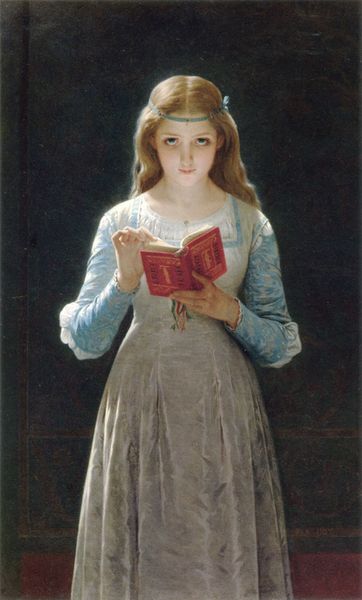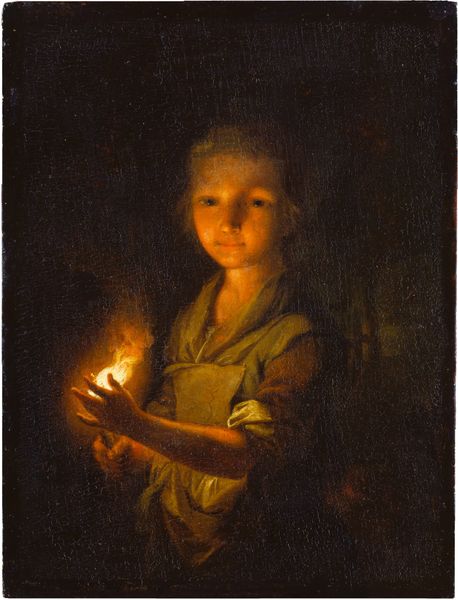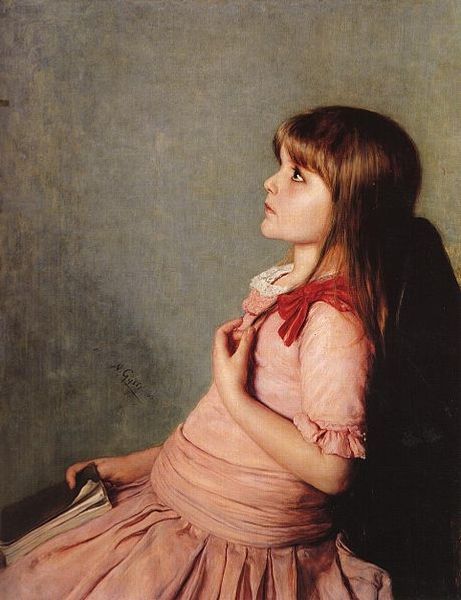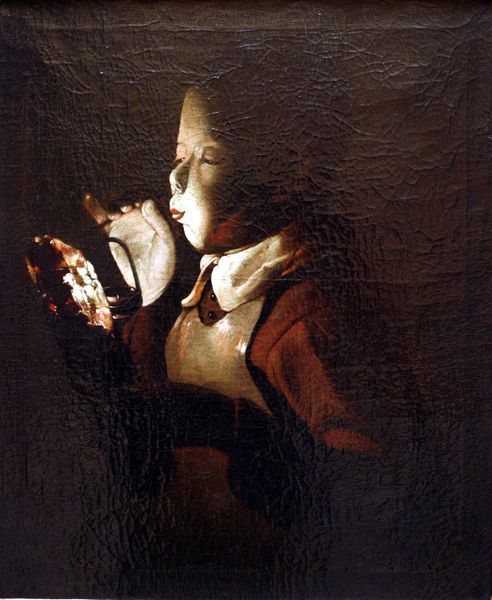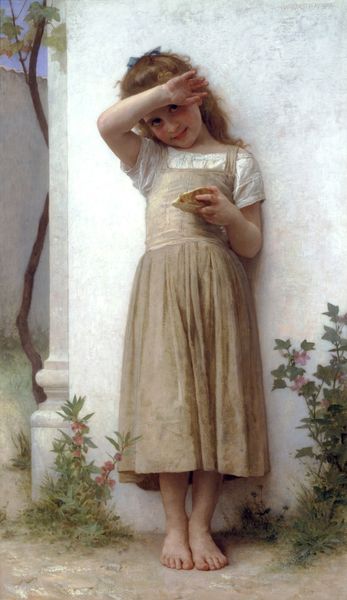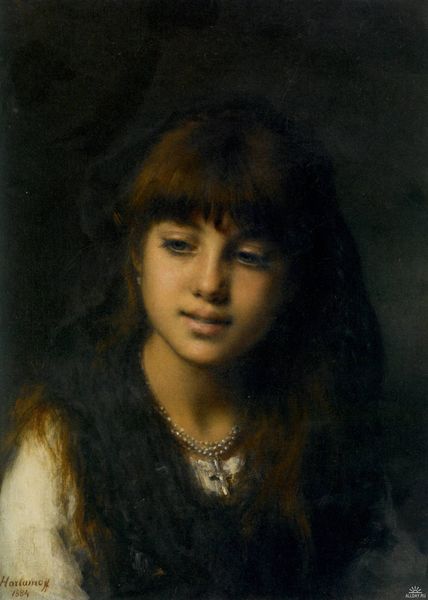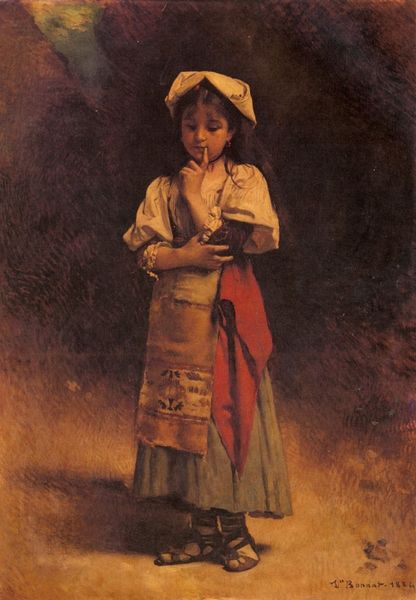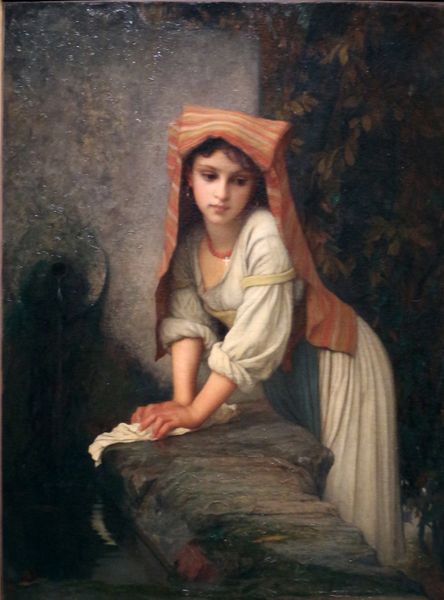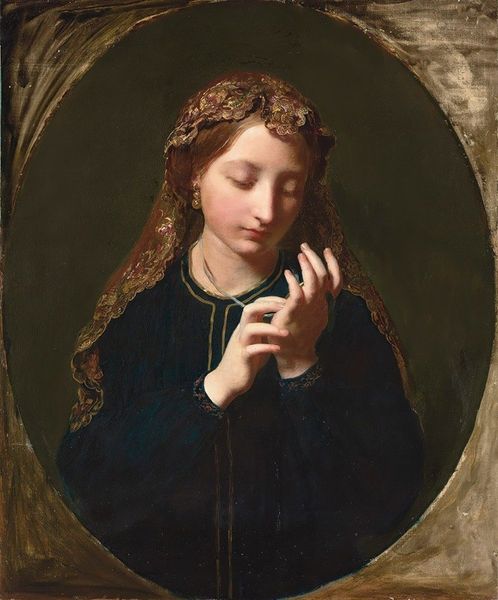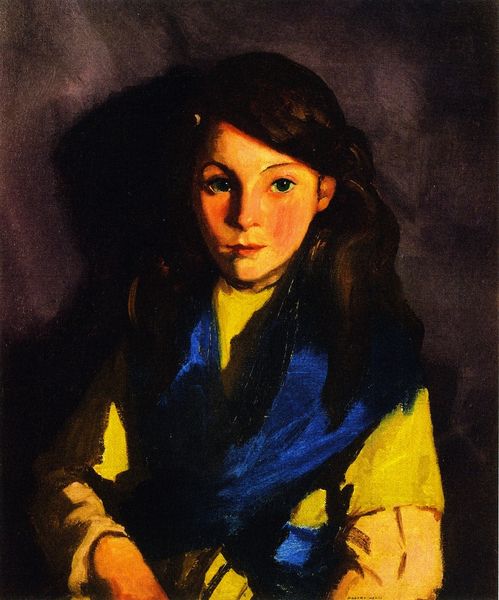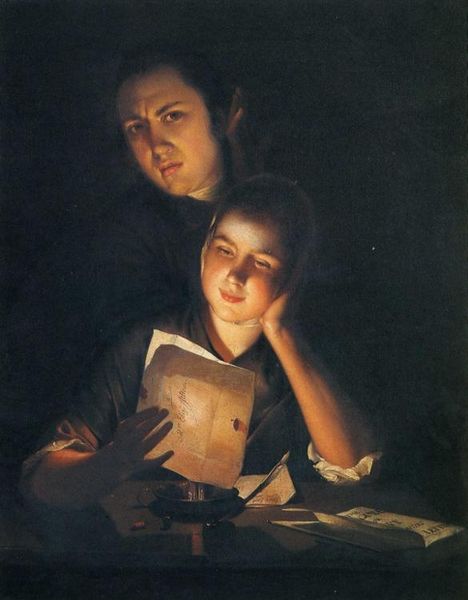
painting, oil-paint
#
portrait
#
allegory
#
painting
#
oil-paint
#
figuration
#
romanticism
#
chiaroscuro
#
academic-art
Copyright: Public domain
Curator: My goodness, there’s such a powerful intimacy in this piece! It's practically whispering secrets. The way light pools on her face, against that almost aggressively dark background—it's utterly captivating, like catching someone in a very private moment. Editor: Yes, Pierre-Auguste Cot, of course. This is, fittingly titled, "Ophelia." Though it doesn’t have a known creation date, we do know that the work uses oil paints. You’re right—the artist leans heavily into chiaroscuro; the effect definitely draws our attention to this almost idealized, romanticized representation of a woman in presumed contemplation. Curator: Contemplation, perhaps, or something deeper? She has the slightly wild-eyed look of someone caught between worlds, doesn’t she? And the book—what's she reading? Something devotional? Or perhaps a secret diary full of forbidden desires? I feel that she has no way to hide. That open book she’s staring at may represent an allegorical approach in which nothing remains untold. Editor: I find her gaze more troubling, actually. Ophelia, even outside of her association with Hamlet, has been relentlessly depicted as a figure of tragic femininity, defined by her relationship to men and her ultimate demise. Even here, the softness, the lighting, all contribute to this passively tragic narrative, as if her story were already written for her. Curator: Written for her, yes—but is she passively accepting it? Look again. There's a subtle rebellion in her eyes, a challenge. Perhaps she's finding her own truth within those pages, rewriting her own narrative, against all odds. That book may provide the escape route she is looking for, who knows what will be born out of its pages? Editor: I'd love to agree. I just wonder if, through centuries of paintings and portrayals such as these, Ophelia ever gets a chance to truly speak for herself. As beautiful as this rendering is, does it actually give us anything beyond another surface? And I struggle with it perpetuating academic art’s vision of an aesthetic romanticism that may do more damage to Ophelia than justice. Curator: Maybe that's the point, though. To keep asking those questions, to keep searching beneath the surface, to find those whispers of untold stories. Editor: An important point! So let’s listen more carefully. Let's work harder to amplify those faint, perhaps submerged, but utterly vital, stories that resonate beneath what is immediately visible.
Comments
No comments
Be the first to comment and join the conversation on the ultimate creative platform.
